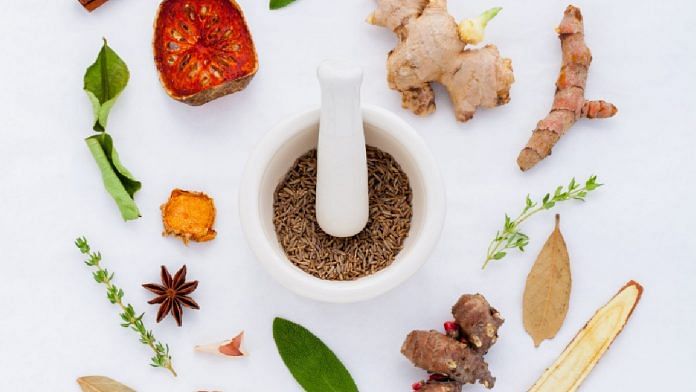With climate change knocking on our doors, it is sobering to note that a great many of these herbs are on the endangered lists of several international conservation agencies. The irony is that they became endangered precisely when they were converted into mass- produced cosmetic and health products, which increased their popularity. And there lies the rub. For the modern market system to make a product that is optimal in quantity and viable to produce, sell and profit from, it needs to be produced in large quantities. And if producers increase, then there are larger number of buyers of the herbs, with only two possible outcomes – greater quantities are widely collected from the wild so that the prices of the products remain low, or small amounts are collected, which makes the product expensive and exclusive.
Either way, it does not consider the regenerative cycle of the plant because that does not match the production cycle of manufacture. Inevitably then, the more cosmetic products or medicines made from these plants become available, the more endangered the plants are likely to be. So even as we endorse the use of herb- based medicines or herbal cosmetics, we need to keep in mind the negative impact of producing them in the current large-scale system of production. For a balance between the two – demand and supply that does not endanger the plant-base – a different system of production and distribution needs to be worked out.
Simply put, things need to be produced locally and consumed locally, with the focus on the good quality of the product, and not fancy packaging and marketing. Some people are already doing this in small ways and we should encourage them by buying form them. Nature provides bountifully and if we focus on what we already have, and want a little less, we would use it sensibly, and sustainably.
An amazing feature of the uses of these plants is their astonishing similarity across different regions, even those which might not have had much communication. Ambolakpa, for instance, is an engendered orchid from the region of Ladakh but also found in the alpine regions of the state of Uttarakhand. Comparisons of the practices of Amchis and of the
local vaidyas (names of local practitioners of these regions) show that they use it for the same disease or health conditions. Further, when studied in laboratories to validate their claims, they are found to be sound and practical. So, clearly, similar knowledge about plants developed in different places, and systems of credible medical knowledge emerged from them, even when their ways of knowing were very different from those of modern medicine and science.
However, wherever they are not found in textual traditions, they were either not taken seriously by modern medical practitioners and scientists for a long time, or that only if their efficacy was established by ‘scientific’ parameters, would they be considered legitimate. Some Ayurvedic practitioners crafted clinical trials based on Ayurvedic parameters and this could be a way of establishing evidence for the ‘oral’ knowledge traditions as well.
Some scientists, however, have systematically collected information about the uses of almost all the herbs listed here on the basis of traditional knowledge. Thus, they have given credence to that knowledge and carried out analysis and experiments on these herbs along the lines of biochemical parameters and documented them accordingly, with the aim of bridging the knowledge systems.
Many such scientific sources have been used in this book, and are listed at the end. But here, I must point out a glaring omission. While all scientific papers are required to acknowledge whatever information/knowledge they use that is not their original work, through citations of some kind, none of the scientific papers documenting the traditional knowledge about medicinal plants ever record the sources from where they learned them. So the irony is that local healers, home-makers and any other sources remain unknown and unacknowledged, even while their knowledge gains some legitimacy.
Ashwagandha—Indian Winter Cherry, Withania somnifera
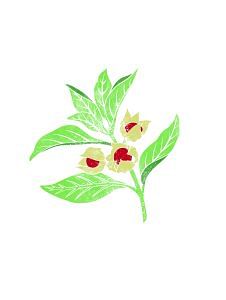
Ashwagandha: Sanskrit, Hindi, Bangla, Assamese
Amukurram: Malayalam
Hiremaddina Gida: Kannada
Medicinal Properties
Ashwagandha roots are a highly acclaimed tonic for the brain and nervous system in the Ayurveda system of medicine. Its usage is recommended in preventive health care. Detailed investigations – both clinical and experimental – observed that ashwagandha acts as an anti-stress and adaptogenic herb. Its regular use improves stress tolerance, thereby enhancing one’s mental capabilities and the quality of the body’s immune functions. Ashwagandha has been a prized adaptogenic herb for at least 3000 years in India. As there haven’t been any studies that specifically look at the effects of ashwagandha during pregnancy, it is advised to avoid taking this plant in any form during pregnancy.
Culinary Benefits
Ashwagandha is a super food that promises glowing skin and healthy nails. It has high levels of antioxidants that fight signs of aging such as wrinkles, dark spots, fine lines and blemishes. It also contains alkaloids that act on the nervous system to ease anxiety and stress, which in turn has a direct impact on skin and hair health. Ashwagandha tea helps counteract and reduce the negative effects of increased cortisol levels in the body, along with improving one’s resistance towards stress. Boil half a teaspoon of ashwagandha root powder in two cups of water, with a pinch of ginger, and then allow it to cool. Add a dash of honey to enhance the taste of the tea if needed.
A stamp was issued by the Indian Postal Department in 2003 to commemorate its flowers.
Also read:
Brahma Kamal—Sacred Sausurea, Saussurea obvallata
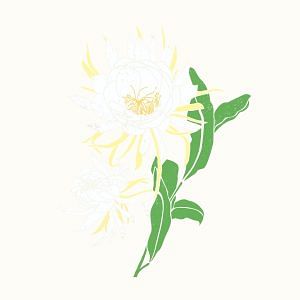
Brahma kamal, the state flower of Uttarakhand, is revered in religious purposes and known for its impressive medicinal properties. The plant, which grows above an altitude of 14,000 feet, is under imminent threat posed by over-harvesting and drastic climate change. The species – whose botanical name is Saussurea obvallata – is found only in the Himalayas.
Medicinal Properties
According to the Indian Academy of Sciences, brahma kamal clears recurrent urinary tract infections and can be used in treating fever. Considered a herb in both Tibetan and Chinese fields of medicine, its flowers, roots and leaves are often used in the treatment of bone ache, intestinal ailments, cough and cold.
Culinary Benefits
Due to its bitter nature, it is an excellent liver tonic and a great appetizer. Soup made from this plant helps soothe liver inflammations and also increases blood volume in the body.
Ritual Use
The flower is extensively used in shrines and temples in higher altitudes as offerings.
Catching the flower in bloom is a rare sight. Brahma kamal blooms in the late evening and stays for only a couple of hours. The flower remains intact throughout its life cycle. It blooms only one night in a year, exposing its star-like petals. The one who sees the blooming flower is believed to be blessed by Lord Brahma.
Also read: Ayurveda to Unani—traditional medicine systems can’t run on anecdotal evidence. Need research
Zafran—Saffron, Crocus Sativus
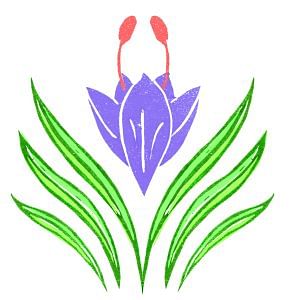
Culinary Benefits
Zafran, also known as kesar, is one of the most prized components of many a preparation across the country, whether sweet or savoury giving the dish a beautiful tinge and a special aroma. It is added to biryani, pulao, halwa, kufli, kheer and many other delicaies for both colour and taste.
Cosmetic Cures
Zafran strands, when infused in raw milk, can be used as a natural cleanser for the skin – by dipping a cotton ball in the zafran milk and cleansing one’s face with it. Zafran has great value for the skin and many new cosmetic formulations are now using it in face creams and packs particularly due to it nourishing the skin cells to withstand pollution and adverse climatic conditions better. But because of both its price and availability, this is quite limited.
Ritual Use
As part of a Hindu ritual, zafran is offered to Sri Ganapathy as it is believed that this is his preference.
Kashmir, once known as the South Asian hotspot for zafran production, has, over time, lost this heritage to several causes. ‘They include a dearth of high-quality corms as seed material, poor soil fertility, poor irrigation, infestation by rodents and diseases and increased urbanisation on land that is conducive for the crop, rampant adulteration, and import of cheaper Iranian variety. Among all these factors, the most significant challenge that threatens the existence of the saffron industry in Jammu and Kashmir is the adverse effect of climate change,’ explains Nasheeman Ashraf, a scientist from Kashmir.
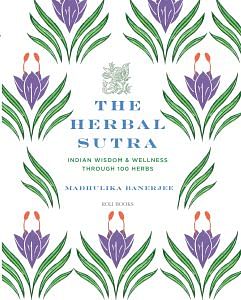
This excerpt from Madhulika Banerjee’s ‘The Herbal Sutra: Indian Wisdom and Wellness Through 100 Herbs’ has been published with permission from Roli Books.


